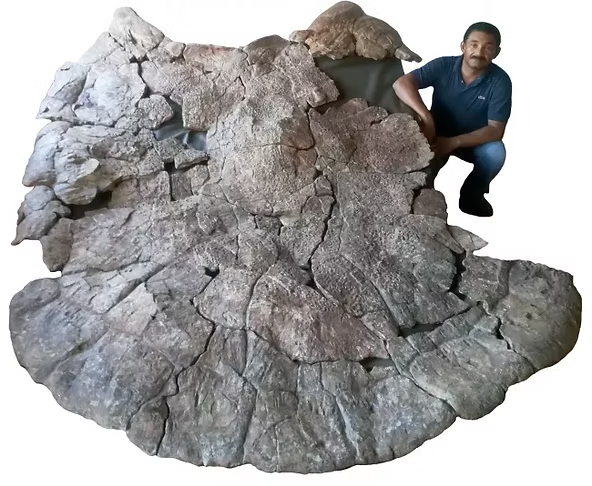Largest Turtle Shell Ever Found
An 8-million-year-old turtle shell discovered in Venezuela measures nearly 8 feet (2.4 meters) long, making it the largest complete turtle shell known to science. The shell belonged to an extinct species called Stupendemys geographicus, which lived in northern South America during the Miocene epoch (12 to 5 million years ago).
Size and Weight
S. geographicus weighed an estimated 2,500 lbs (1,145 kg), almost 100 times the size of its closest living relative, the Amazon river turtle (Peltocephalus dumerilianus), and twice the size of the largest living turtle, the marine leatherback (Dermochelys coriacea).
The species likely achieved this colossal size thanks to the warm wetlands and lakes in its habitat.
Fossil Discoveries
Though scientists have known about S. geographicus since 1976, new fossils uncovered more details. Shells and the first known lower jaws came from a 1994 dig in Venezuela’s Urumaco region, along with additional finds from the La Tatacoa Desert in Colombia.
Unique Features
Male S. geographicus had horn-like projections at the front of their carapaces. These horns were likely used in male-to-male combat, similar to how modern snapping turtles (Chelydridae) fight to establish dominance.
Evidence of combat includes an elongated scar on one shell’s horn. Other shells showed signs of predation, such as a lone caiman tooth embedded in the shell, suggesting even these giant turtles were hunted by predators.

